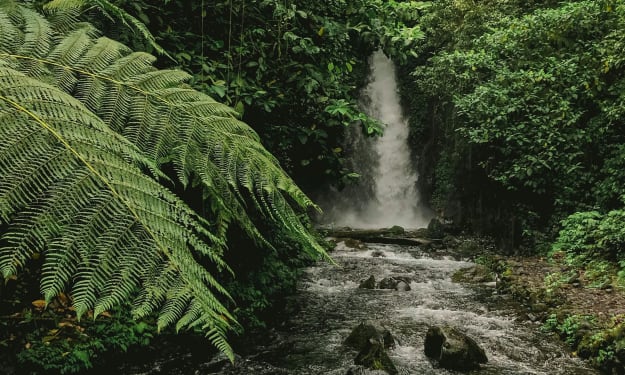
In early May, U.S. Secretary of State Mike Pompeo traveled to Rovaniemi, the capital of Finland’s northernmost province, to deliver a speech to the Arctic Council, a group made up of the eight nations that border the Arctic, plus representatives of the region’s indigenous peoples. For about 20 years the council has encouraged collegial debate, cooperation, and a progressive perspective on climate change. Pompeo’s appearance, as the emissary of an administration that is opposed to that approach, made for an awkward moment.
“This is America’s moment to stand up as an Arctic nation and for the Arctic’s future,” Pompeo declared at an event the night before the official meeting. “Because far from the barren backcountry that many thought it to be … the Arctic is at the forefront of opportunity and abundance.”
The speech signaled the end of a truly bizarre rebranding of the Arctic that has been under way for more than a decade. What was once considered a frozen wasteland is now routinely described as an emerging frontier. The Arctic, in other words, is open for business.
For most of human history, the world above 66 degrees latitude has remained largely out of play for large-scale commerce. Explorers, speculators, and scientists long believed rich resources and shipping routes lay hidden beneath the Arctic’s ice and snow, but the true nature of its wealth was obscured by the same deadly cold, debilitating darkness, and enormous distances that blocked its exploitation.
Today the Arctic landscape is greener than you are probably comfortable imagining, with fewer caribou and reindeer, more mosquitoes, warmer summers. The most visible and disturbing change has come at sea, where summer sea ice—the floating expanse that covers much of the Arctic Ocean during the region’s brief thaw—has been disappearing at an astonishing rate.
While this floating sheet always shrinks in warm months and grows again with the return of the cold, the scale of ice loss has been unprecedented, and some researchers believe it’s speeding up. NASA scientists estimate that on average the Arctic loses nearly 21,000 square miles of ice each year, and the experts who prepared the 2014 National Climate Assessment predict the Arctic Ocean will be ice free in summer before 2050.
“It’s all happening much faster than anyone thought,” said Michael Sfraga, director of the Polar Institute at the Wilson Center in Washington, D.C. “There’s an ocean opening before us in real time.”
Along the new frontier, the contest will not be about claiming new territory. Except for a few disputed tracts, mostly on the seafloor and including the North Pole itself, the Arctic’s borders are settled. Instead nations and corporations are now seeking a share of trillions of dollars’ worth of minerals—including gold, diamonds, and rare earth metals—petroleum, natural gas, and fish, as well as access to potentially cost-saving new shipping lanes.
Retreating ice has been followed, in some places, by heavy investment. Russia and Norway have been the most active Arctic nations, spending billions over the past decade on natural gas and oil infrastructure, deep-water ports, and ships capable of navigating the Arctic Ocean’s still-icy waters. Meanwhile China has sought its own footholds in the region, backing Russian gas projects and offering development loans to other Arctic nations. The Chinese also are building their own fleet of icebreakers, a clear bet on the future by a nation that lies more than 2,500 miles south of the pole.
By contrast, most Western nations, including Canada and the United States, which together control nearly half the Arctic coastline, have virtually ignored the north. The U.S. has five functioning icebreakers (compared with Russia’s 51) and no deep-water ports north of the Arctic Circle. That disequilibrium has, in turn, been dogged by a creeping tension, and the new frontier narrative has been accompanied by one of looming conflict, even the possibility of a new Cold War. These fears, finally felt in the U.S., were the real reason behind Pompeo’s appearance at the Arctic Council.
“The region has become an arena for power and for competition, and the eight Arctic states must adapt to this new future,” he said. “We’re entering a new age of strategic engagement … complete with new threats to the Arctic and its real estate, and to all of our interests in that region.”
The problem, of course, was that if Pompeo wanted to think of the Arctic as an arena, presumably where a race might be run, some nations already had a solid head start.
About the Creator
Adams
writer | artist | chef
Enjoyed the story? Support the Creator.
Subscribe for free to receive all their stories in your feed. You could also pledge your support or give them a one-off tip, letting them know you appreciate their work.





Comments
There are no comments for this story
Be the first to respond and start the conversation.